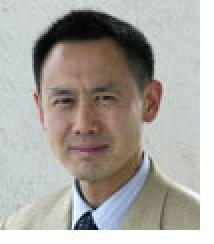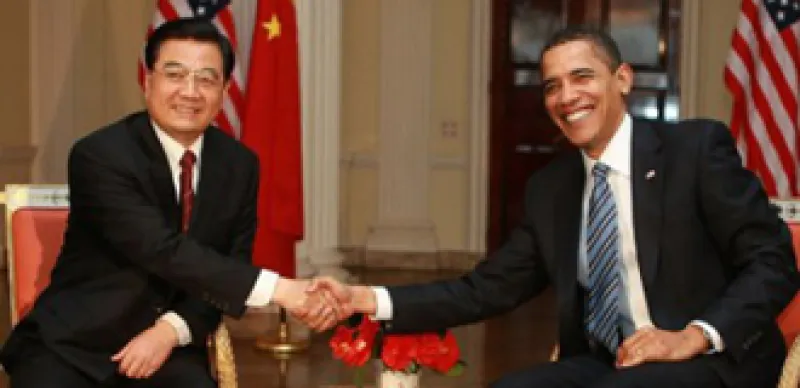
In a visit to Tokyo, he charmed the Japanese by restating America’s commitment to the Japanese alliance. Even before he arrived in Singapore to participate in the Asia Pacific Economic Cooperation summit, he impressed Asian leaders by expressing interest in joining in the negotiations for the Trans-Pacific Partnership pact, which would establish a free-trade area spanning the Pacific and reduce trade tariffs for 2.4 billion consumers. He also met with the 10 leaders of the Association of Southeast Asian Nations — the first time a U.S. president has met the entire group together, despite the fact that the U.S. has concerns over human rights abuses in Myanmar. He did use the occasion to press Prime Minister Thein Sein about the release of opposition Aung San Su Kyi from house arrest.
He also delivered the most important message of the trip: America isn’t afraid of — and will work with — a rising China. China’s leaders reciprocated by allowing Obama to hold a live TV broadcast of a town hall-style meeting he held with a select group of Chinese college students in Shanghai, demonstrating the charm and flair of a popularly-elected U.S. president.
Arguably, U.S.-Asia relations are among the most important going forward. In the 21st century, it is clear that much of Asia, driven by China and India’s huge internal markets, will continue to grow, while growth in the U.S. and Europe, encumbered by high taxes and high costs, will slow.
Obama’s biggest challenge is to reorient U.S.-Asia policy away from its focus on North Korea’s nuclear ambitions and the war against Islamic extremists in Afghanistan, to that of a policy focused on trade and inspiring next-generation Asian leaders to look to the U.S. for ideals.
The biggest challenge a rising China poses to America is not its increasing military might, but rather its success in blazing a path of state-driven capitalism and autocratic one-party rule.
Asians increasingly are looking to China as a leader for the region. Even Japan’s new ruling Democratic Party wants closer ties with China and a foreign policy that is independent of Washington (in addition to its goal of pushing U.S. troops out of Okinawa).
Long influenced by Confucian values, which are based on a patriarchal view of society, next-generation Asian leaders no longer see China’s Communist Party as communist, exactly, but rather a “father knows best” type of ruler. The Communist Party has done a remarkable job transforming itself from that of being a leftist revolutionary entity to one focused on delivering economic growth and jobs for its 1.3 billion citizens. Long gone are the days when Beijing fomented revolution throughout Asia. Leaders in Beijing instead focus on capital markets and a balanced monetary policy that creates sustained growth and not economic bubbles.
This transformation of China in the past two decades occurred at a time when Asians saw American foreign policy increasingly focused on unilateralism, especially warfare. In the past two decades, American troops have seen action in Somalia, the Balkans, Afghanistan and twice in Iraq. Before Lehman Brothers collapsed, America tended to talk down to Asia. Asia had it all wrong in handling the Asian financial crisis by not ending “crony capitalism” and not letting its weak financial institutions fail, said the International Monetary Fund in Washington. Asia needed capacity building, and only Washington could teach it, Asians were scornfully told.
Asians, however, couldn’t help but notice that America didn’t practice what it preached when a financial crisis hit its own home turf. With so much of their collective $4 trillion-plus in foreign exchange reserves locked up in U.S. Treasuries, most Asian nations rushed to bail out Wall Street. The formation of the Group of 20 nations and its replacement of the G7 gave Asians more impetus to continue to bail out Main Street USA by buying more U.S. Treasuries.
But so far, Asians have been largely quiet in criticizing the U.S. Just search Google and you’ll find a lot more scathing commentary on Wall Street from Brazilian President Luiz Inacio Lula da Silva. It’s the Asian way— to be oblique, nuanced, and never too direct – when criticizing others.
Asians are critical of America, they’re just too polite to air their comments publicly. That said, America should not take its leadership in the 21st century for granted. Obama’s diplomatic achievements should be followed through with action. If the Obama administration says it will sign the Trans-Pacific Partnership pact to form a free trade area across the Pacific, then it must do so and not simply spout the rhetoric and follow through by imposing more trade sanctions against China and other Asian trade partners.
The risk of not following through on Obama’s goodwill is significant. If that happens, expect the 21st century to be the Asian Century, led by an increasingly prosperous China, an aspiring India, and a Japan that is tired of being America’s Asian hachi – or lap dog in colloquial Japanese.
Allen Cheng is the Institutional Investor Asia Bureau Chief.






